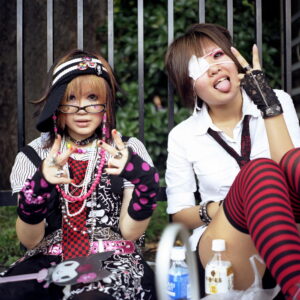 When you’re learning to speak and read Japanese, enough of your energy is spent on reading books and online tutorials about conjugations and kanji that you may completely ignore how communication works when you’re face to face with a Japanese-speaking person. However, communication is, by definition, the expression of ideas between two or more people. That’s why it’s important for you to think outside of the box from time to time and learn what communicating with a Japanese speaker entails beyond just words.
When you’re learning to speak and read Japanese, enough of your energy is spent on reading books and online tutorials about conjugations and kanji that you may completely ignore how communication works when you’re face to face with a Japanese-speaking person. However, communication is, by definition, the expression of ideas between two or more people. That’s why it’s important for you to think outside of the box from time to time and learn what communicating with a Japanese speaker entails beyond just words.
Knowledge of Japanese hand gestures is essential for proper communication, unless you want to suffer from a few misunderstandings. Some Japanese hand gestures are similar to those in the West, but many are not. A few of the most common Japanese hand gestures that don’t have the same meaning in the West include:
- The “come here” gesture: Commonly confused for the Western “good-bye” gesture, the Japanese “come here” gesture is done with one hand, palm toward the person with whom you want to communicate, and quick repeated bending and straightening of the the four primary fingers. You may also hear “oide” or “chotto kite,” both of which mean “come here.” A Japanese teacher of mine said that she didn’t know this didn’t have the same meaning in the West and waved to a co-worker with whom she wanted to speak. The co-worker smiled, waved back, and went on his way.
- The “no thank you” gesture: When you want to turn down an offer, such as an offering of food, you can quickly shake your hand back and forth in front of your face. Keep your hand stiff as you do. This gesture looks somewhat like a gesture in the West when you smell something unpleasant and you’re trying to move the air in front of your nose. Don’t be insulted if a Japanese person performs this gesture when you offer something you’ve cooked yourself! At the time you do the gesture, you can say, “kekkou desu,” which translates to “no thank you.”
- The “me” gesture: While not a completely important example of communication, you may be confused if you see a Japanese person point to his or her nose while you’re speaking. This is just a hand gesture to mean “me.” So if a Japanese person wants to emphasize that the discussion concerns him or herself, you may see this hand gesture in action.
- The “let’s get a drink” gesture: If you’re out with friends or co-workers, you may see a Japanese person make a fist with his or her index finger and thumb extended in a round shape. He or she is mimicking the small sake cup and is asking if you want to get a drink.
- The “boyfriend/girlfriend” gestures: Holding your pinky extended with the rest of your hand in a fist can refer to a “girlfriend” or “kanojo.” Giving what appears to be the “thumbs up” sign, with your hand in a fist and your thumb extended upwards can refer to a “boyfriend” or “kare.” When a Japanese person wants to ask if you have a boyfriend or girlfriend or if the person you’re with is your boyfriend or girlfriend, you may see him or her making these gestures.
No related posts.
Tags: hand gestures, japan, japanese culture, japanese language



